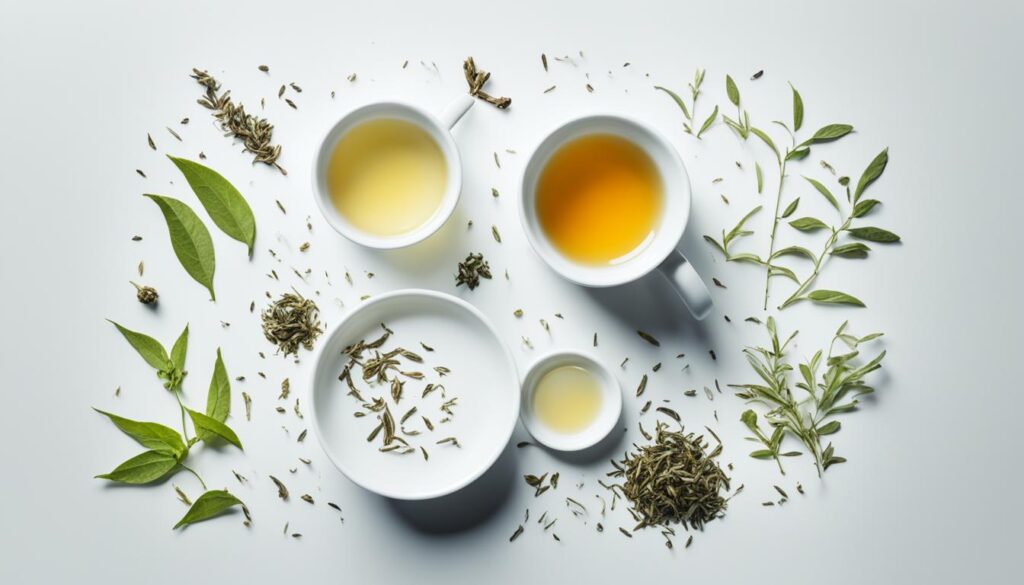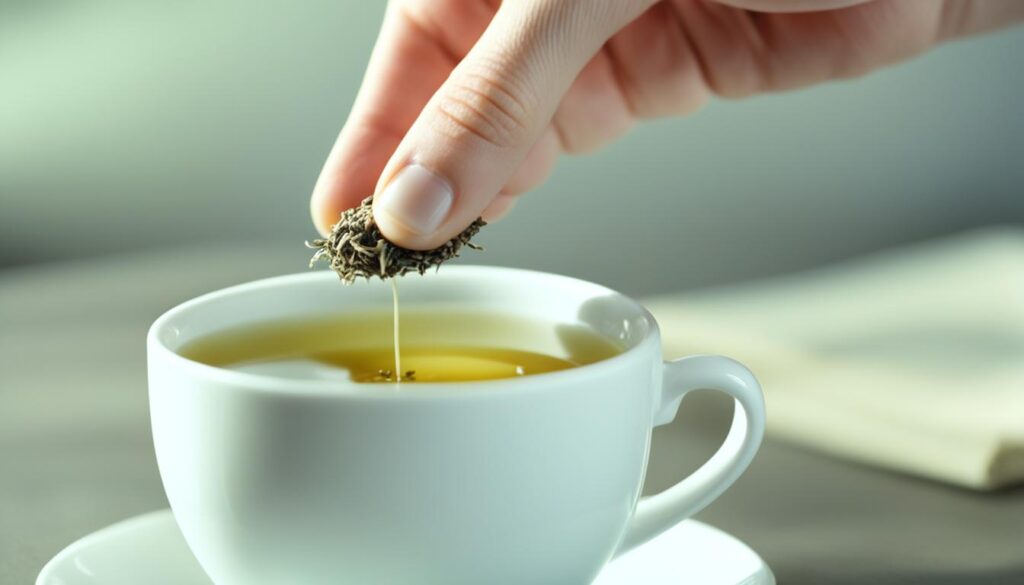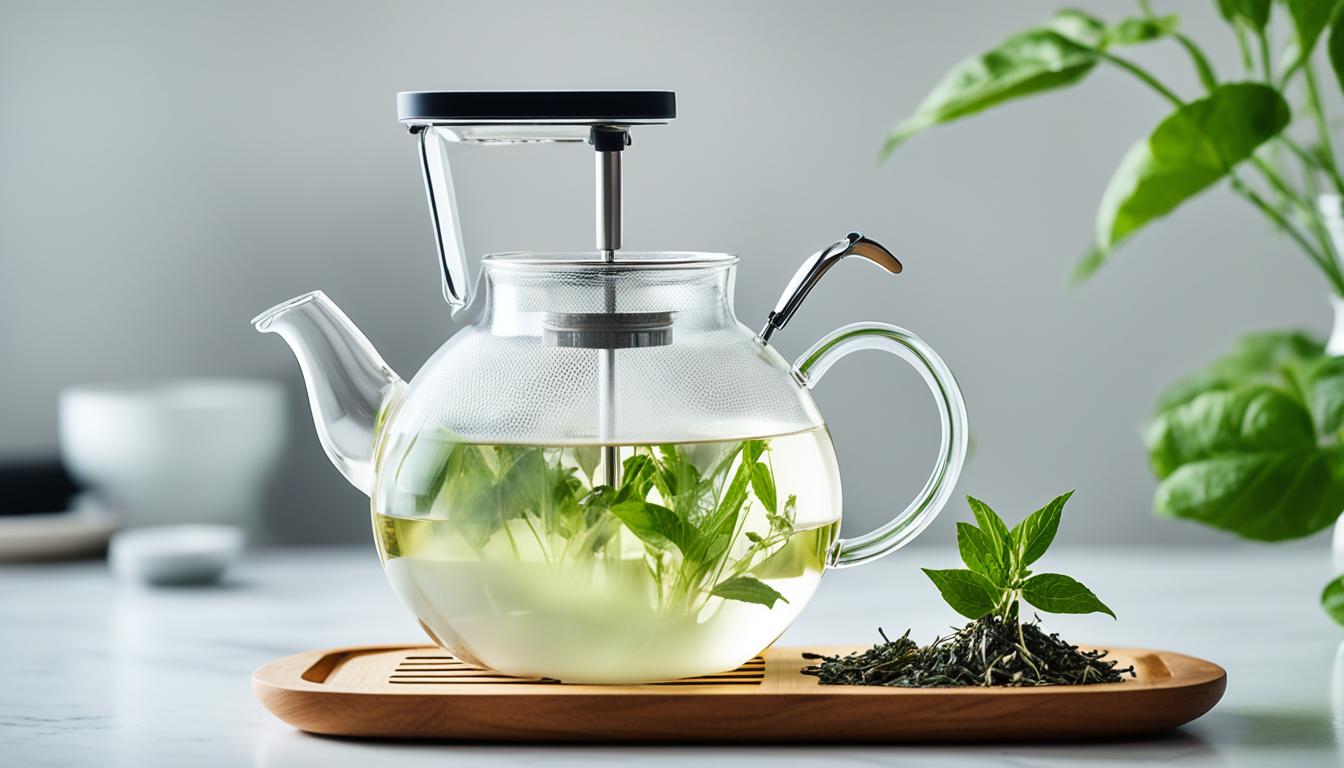The art of brewing white tea transcends the routine of simple preparation, elevating it to a ritual of mindfulness and sensory pleasure. As you seek to refine your white tea brewing expertise, you’re embarking on a journey that promises to transform your appreciation for this subtly exquisite beverage. We are about to delve into the heart of white tea brewing tips and white tea brewing tricks that reveal best practices honed by connoisseurs. This educational voyage will not only guide you to perfect your technique but will also encourage you to savor each moment of the brewing process.
With the right guidance, the nuances of brewing white tea will become clear, turning your tea time into a source of tranquility and fulfillment. Whether you’re a seasoned tea lover or are newly discovering the joys of white tea, this article will provide valuable insights that enhance every cup you brew. Let’s ignite your passion for tea and start infusing your days with the delicate charm of skillfully brewed white tea.
Key Takeaways
- Discover the transformative power of turning tea brewing into a meditative ritual.
- Gain actionable insights on best practices for brewing white tea to achieve the perfect cup.
- Learn essential white tea brewing tips and techniques unique to this delicate tea variety.
- Unlock the secrets behind the correct temperature and timing for white tea brewing tricks.
- Embrace the educational journey towards becoming a white tea brewing aficionado.
- Master the balance of flavor and aroma in your white tea with our comprehensive guide.
Understanding the Delicate Nature of White Tea
To appreciate white tea to the fullest, it’s essential to dive into the attributes that set it apart from other teas. Revered for its delicate flavors and minimal processing, white tea provides a serene sipping experience that is both refined and gentle. By following this white tea brewing guide, connoisseurs and beginners alike can explore this revered beverage while ensuring each cup is steeped to perfection.
The Basics of White Tea Varieties
White tea is celebrated for its nuanced flavor profile, which stems from the unique white tea varieties available. Among the most treasured are Silver Needle, known for its silvery-white buds that yield a light, honeyed taste, and White Peony, which offers a fuller flavor with floral undertones. This step-by-step guide to brewing white tea will introduce you to the cultural significance and distinct characteristics of these varieties, setting the stage for a brewing process that honors their delicate qualities.

Optimal Storage Practices for White Tea Leaves
Proper storage of white tea is a cornerstone of white tea brewing best practices. The key is to maintain the integrity of the leaves by shielding them from elements that can deteriorate their quality—such as moisture, light, and strong odors. To preserve your white tea elegantly and effectively:
- Store in airtight containers away from direct sunlight.
- Keep at a stable temperature, ideally between 60-80°F (15-26°C).
- Avoid areas with high humidity to prevent mold growth.
By nurturing the proper conditions for your white tea leaves, their delicate flavors will remain intact, allowing for an exquisite brew each time.
Comparing White Tea to Other Tea Types
When comparing white tea with green, black, and oolong teas, several distinctions become apparent. White tea undergoes minimal fermentation, resulting in a lower caffeine content and a lighter taste that requires a more careful brewing technique, particularly with regard to the white tea brewing temperature and the steeping time for white tea.
| Tea Type | Fermentation | Caffeine Content | Taste Profile | Health Benefits |
|---|---|---|---|---|
| White Tea | Minimal | Low | Delicate, Light | High in Antioxidants |
| Green Tea | Light | Medium | Grassy, Astringent | Rich in Catechins |
| Black Tea | Fully Fermented | High | Bold, Brisk | Heart Health Benefits |
| Oolong Tea | Partially Fermented | Moderate | Complex, Varied | Metabolic Benefits |
With its understated elegance, white tea stands alone, prompting a brewing approach as refined as the tea itself. By understanding these contrasts, enthusiasts can better appreciate the subtleties involved in how to brew white tea properly and relish every delicate sip.
Brewing White Tea: Tips and Tricks
Brewing the perfect cup of white tea requires a gentle hand and an eye for detail. To ensure the delicate flavors are fully appreciated, understanding the white tea brewing temperature and steeping time for white tea is crucial. Let’s delve into the white tea brewing techniques that will help you master how to brew white tea properly.

- Always begin with fresh, purified water to avoid any contaminants that could overshadow the tea’s subtle notes.
- Heat the water to just before boiling, between 160 to 185°F (71 to 85°C), which is the ideal white tea brewing temperature.
- Pour the heated water over the tea leaves carefully to avoid shocking the leaves which can alter the flavor.
- Allow the white tea to steep for the right duration—too short, and you’ll miss the depth of flavor; too long, and the tea can become bitter. A general guide for the steeping time for white tea is 4-5 minutes.
- For a more nuanced taste, consider multiple infusions by re-steeping the leaves several times, with each steep slightly longer than the previous one.
Perfecting these steps will enhance your tea experience and bring out the full range of flavors that white tea has to offer. Below is a comparative guide that outlines the steeping time for white tea based on different white tea types:
| White Tea Type | Temperature | Steeping Time |
|---|---|---|
| Silver Needle | 160-170°F (71-77°C) | 4-5 minutes |
| White Peony | 170-185°F (77-85°C) | 5-7 minutes |
| Shou Mei | 180-185°F (82-85°C) | 5-7 minutes |
Remember, these are guidelines to help you start your journey with white tea. The most beautiful aspect of tea brewing is the personal touch you can add—experiment with the white tea brewing techniques to find what pleases your palate the most. Enjoy the process and your exquisite cup of white tea.
Conclusion
In our exploration of white tea’s serene world, we’ve journeyed beyond mere guidelines and into the realm of transforming a daily routine into a sacred **white tea ritual**. As you engage with the best practices for brewing white tea, discover the tranquility that accompanies the gentle swirl of aromatic steam rising from your cup. Embrace the peace that settles over you with each careful measurement and patient steep, and find solace in the knowledge that this ancient art enhances every sip with intention and grace.
Cultivating a White Tea Ritual
The alchemy of water and leaf is not just a process but an invitation to mindfulness. A **white tea brewing guide** serves as a map—to guide you through the forests of flavor and the fields of fragrance that white tea offers. But to truly capture the essence of the brew, immerse yourself in the ambience: select your favorite teaware, arrange your space to calm the mind, and let the act of brewing become a practice of presence.
Continuing Your Journey with White Tea
Your **white tea journey** does not culminate in the perfect cup—it merely begins there. There’s a galaxy of leaves to taste and territories to traverse within the white tea universe. With each step, curiosity awakens and beckons you forward; visit tea farms, engage with fellow enthusiasts, and delve into literature that elucidates the depths of white tea’s delicate nature. Learn, with each brew, how to better **brew white tea properly**—not just with technique, but with the wisdom of experience.
Sharing Your White Tea Mastery with Others
What joy is found in solitary mastery if not shared? Invite others into the serene ritual you’ve cultivated and broaden the circle of calm by **sharing white tea experiences**. Enlighten friends and loved ones with your insights over a carefully crafted cup, suggest pairings that might elevate their encounter, or even host a tasting that beckons their senses to journey alongside you. Let your passion for white tea ripple outward, enhancing bonds as you divulge the subtleties of its enchantment.
FAQ
What are the key considerations for brewing white tea?
When brewing white tea, it’s essential to focus on the delicate nature of the leaves. Key considerations include selecting a high-quality tea, using the proper water temperature—which is lower than that for green or black teas—ensuring precise steeping time to prevent bitterness, and handling the leaves gently to preserve their subtle flavors.
How does white tea differ from other types of tea?
White tea is the least processed among all tea types, allowing it to retain a high level of antioxidants. It differs in taste, which is lighter and sweeter; in appearance, often having a pale color; and in caffeine content, generally having less than green or black teas. The brewing process for white tea is also more delicate, requiring careful attention to temperature and steeping time.
What is the ideal brewing temperature for white tea?
The ideal brewing temperature for white tea is between 160°F – 185°F (70°C – 85°C). This range allows the flavors and aromas to be extracted effectively without scalding the leaves, which can result in a less desirable flavor profile.
How long should white tea be steeped?
White tea should generally be steeped for 4 to 5 minutes. However, this can vary depending on the specific variety of white tea and personal taste preference. It is important to experiment with timing to find the perfect balance for your palate.
What are the best storage practices for white tea leaves?
To maintain the freshness and delicate flavors of white tea leaves, store them in a cool, dark place away from strong odors. Use an airtight container to protect the leaves from air, moisture, and light. Proper storage will ensure the longevity and quality of your white tea.
Can you brew white tea more than once?
Yes, high-quality white tea leaves can often be infused multiple times. With each infusion, the water temperature can be slightly increased, and the steeping time extended to extract the full range of flavors from the leaves. Multiple infusions can reveal different nuances of the tea’s taste profile.
What type of water should be used for brewing white tea?
It is best to use fresh, filtered water for brewing white tea to ensure there are no impurities that can affect the tea’s delicate flavor. Ideally, the water should have a neutral pH and be free from any strong mineral flavors.
How can you identify quality white tea?
Quality white tea typically has a fresh, floral aroma, and the leaves should be whole and uniform in color. Silver Needle, for example, consists of pure, unopened tea buds with a silvery down. Good white tea will also have a clear liquor and a smooth, mellow taste with no astringency.
What are the health benefits of white tea?
White tea is rich in antioxidants, which can help combat free radical damage and contribute to overall health. It’s also said to have anti-aging properties, promote heart health, and support weight loss efforts. Additionally, its lower caffeine content makes it a soothing choice for those sensitive to stimulants.
How can I make the act of brewing white tea a more mindful ritual?
Creating a mindful ritual around brewing white tea involves setting a calm environment, focusing on the measured steps of preparation, and being present in the moment. Take the time to appreciate the aroma, color, and taste of the tea as you slowly sip it, allowing the experience to relax your mind and rejuvenate your spirit.



